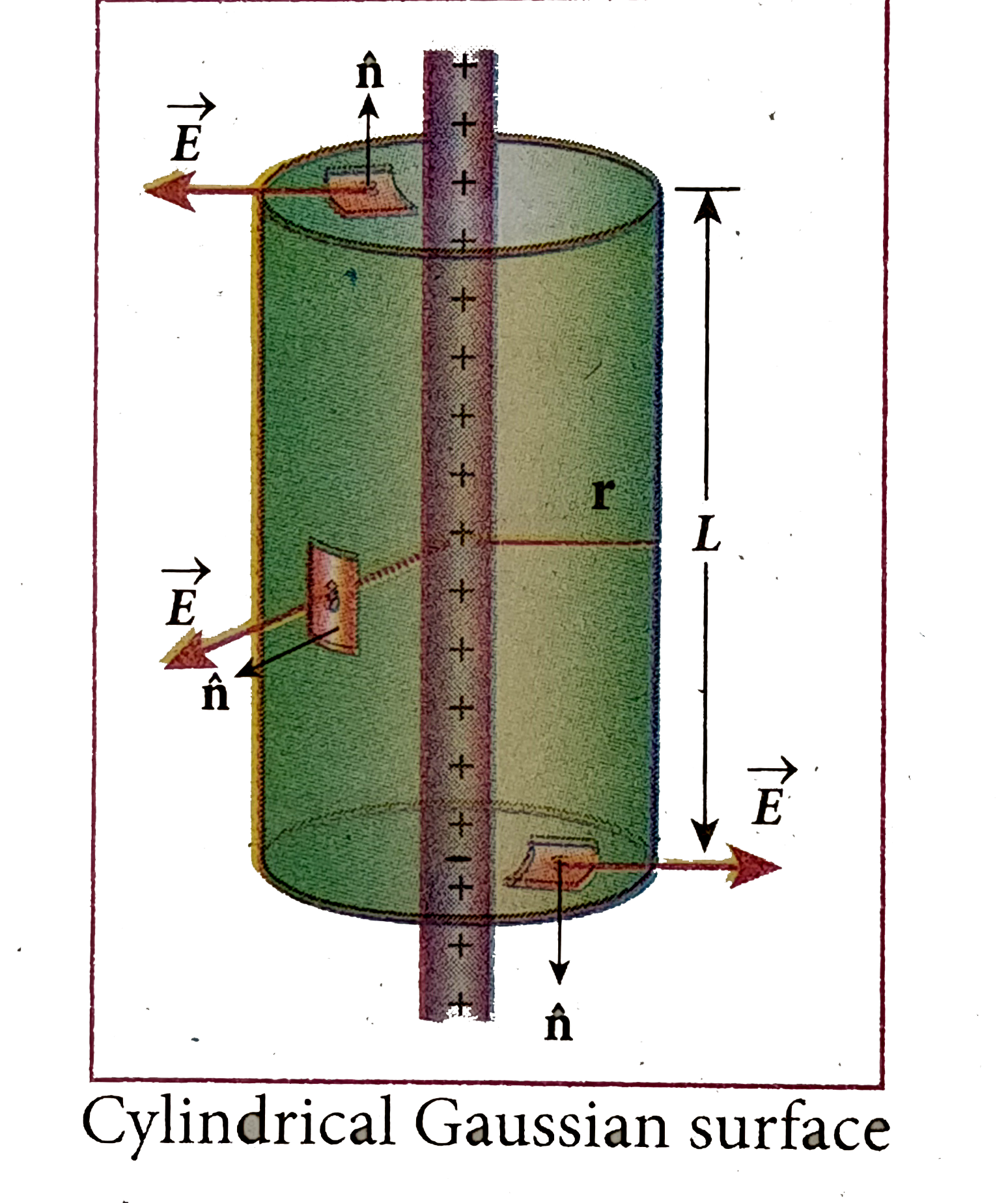Obtain the expression for electric field due to an infinitely long charged wire . Solution in Tamil
Consider an infinitely long straight wire having uniform linear charge density λ. . Let P be a point located at a perpendicular distance r from the wire.
(ii) To find the electric field at the point P be two small charge elements A1andA2 on the wire which are at requal distances from the point P are chooses.
(iii) The resultant electric field due to these two charge elements points radially away from the charged wire and the magnitude of electric field is same at all points on the circle of radius r.

(iv) The charged wire possesses a cylindrical symmetry, a cylindrical Gaussian surface of radius is r and length is L. The total electric flux in this closed surface E.
ΦE=∮→E.d→A
∮Curved surface→E.d→A+∮top surface→E.d→A+∮bottom surface→E.d→A .........(1)
(iv) for the curved surface, →E is parallel to →Aand→E.d→A=EdA. For the top and bottom surfaces, →E is perpendicular to →A and →E.d→A=0
Substituting these values in the equation (1) and applying Gauss law to the cylindrical surface,
ΦE=∫E.dACurved surface=Qenclε0 .........(2)

(v) Since the magnitude of the electric field for the entire curved surface is constant Qencl is given by Qencl=λL.
E∫dACurved surface=λLε0 .........(3)
Here ϕE=∫dACurved surface total area of the curved
surface =2πrl. Substituting this in equation (3),
E.2πrL=λLε0
E=12πε0λr ......(4)
In vector form →E=12πε0λrˆr ............(5)
(vi) The electric field due to the infinite charged wire depends on 1r rather that 1r2 for a point charge. Equation (5) indicates that the electric field is always along the perpendicular direction (ˆr) to wire. In fact, if λ>0 then →E points perpendicular outward (ˆr) from the wire and if λ<0, then →E points perpendicular inward (−ˆr).
(vii) The equation (5) is true only for an infintely long charged wire. For a charged wire of finite length the electric field need not be radial at all points. However, equation (5) for such a wire is taken approximately true around the mid-point of the wire and far away from the both ends of the wire.
Similar Questions
Answer the following:
State Gauss' law in electrostatics. Derive an expression for the electric field due to an infinitely long straight uniformly charged wire.
View Solutionअनन्त लम्बे आवेशित पतले चदरा के कारण विद्युत क्षेत्र-
View SolutionElectric Field Due to Plane infinite Sheet||Electric field due to charged wire||Electric field due to charged conducting / Non-conducting Cylinder
View SolutionUse Gauss's law to obtain an expression for the electric field due to an infinitely long straight uniformly charged wire.
View SolutionState Gauss.s law in electrostatics. Apply it to find the expression for the electric field due to an infinitely long straight charged wire.
View SolutionState Ampere's circuital law. By using it derive an expression for magnetic field intensity at a point due to a straight current carrying conductor.
View SolutionState Gauss' law in electrostatics. Using this law, derive an expression for the electric field due to an infinitely long straight charged wire at a point distant r from it. Plot a graph showing the variation of electric field with r.
View SolutionDerive a expression for electric field intensity due to an infinitely long straight uniformly charged wire or line.
View Solution